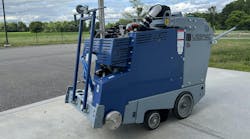High-Strength Insulating Refractories
Plicast LWI 24 HS and its aluminum resistant version Plicast Al-Tuff LWI 24 HS are both the safe choice for lightweight refractory linings inside high-temperature incinerators, boilers, and furnaces. Used in thermal environments of up to 2400°F, these materials have low shrinkage and a low thermal conductivity rating. Perfect for refractory back-up linings and producing lightweight precast shapes in applications where weight is a factor.
Plibrico's Plicast LWI 24 HS and its Al-Tuff aluminum resistant version, possess exceptionally high strength in conjunction with low density. When compared to traditional lightweight refractories, these materials offer an impressive 200% more in cold crushing strength (CCS). The castables increased strength does not affect its density, which is maintained at a noteworthy 80 pounds per cubic foot (pcf). The high strength exhibited in these materials help maximize the life of heating equipment and maintain the integrity of any precast shape.
Another value-adding advantage is the materials low shrinkage, contracting very little during high-temperature use. By doing so, it prevents the formation of cracks and loss of strength typical with cartable refractories of lessor quality. Cracking can result in a loss of boiler efficiency, and the creation of hot spots on the casing or outer shell of a furnace, boiler or incinerator - all of which require costly repairs.
The Plibrico Company recommends these lightweight refractory materials for the aluminum, steel, petrochemical, incineration, and boiler industries for applications that include: precast shapes, linings in reheat furnace floors, annealing furnace cartops, fired oil heater stacks, carbon monoxide boiler duct linings, olefins cracking furnace stacks, over-the-road aluminum ladles, and backup linings in aluminum furnaces.
With the introduction of Plicast LWI 24 HS and Plicast Al-Tuff LWI 24 HS; boiler, furnace, and incinerator users now have access to a superior insulating refractory material that is lightweight, and offers exceptionally high strength with a low density. This terrific combination provides users with a refractory material that maintains integrity and maximizes the life of heating equipment.





